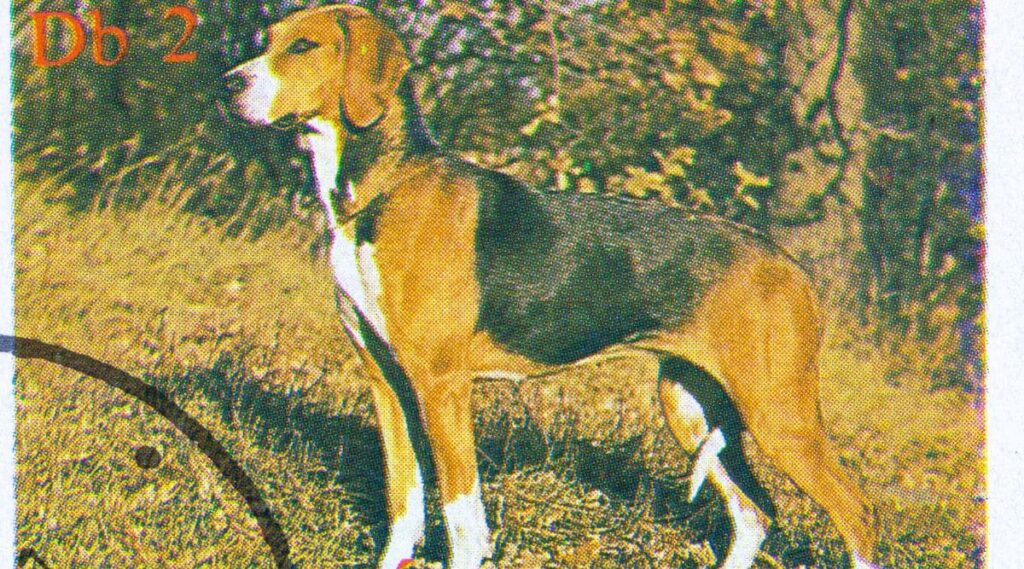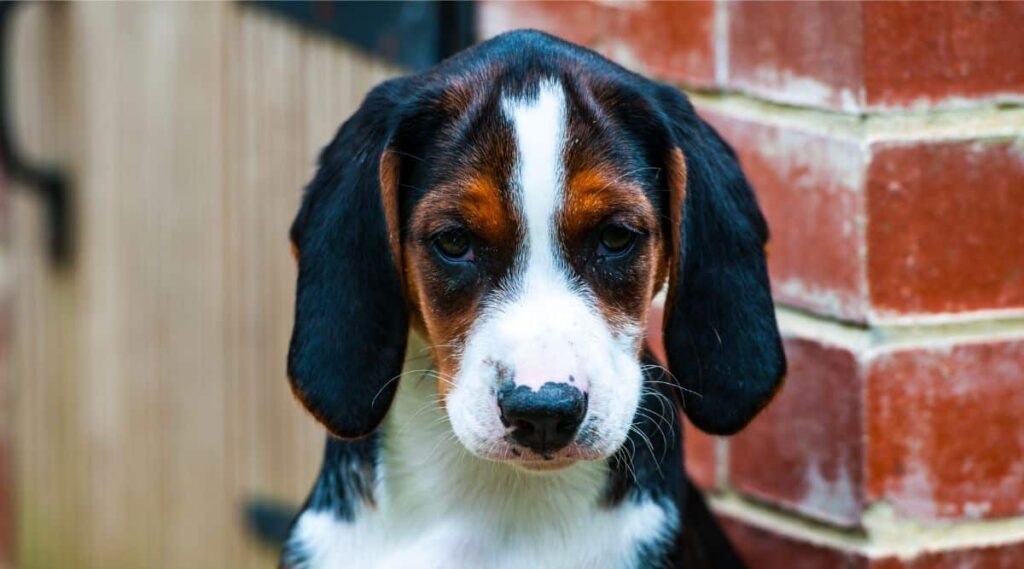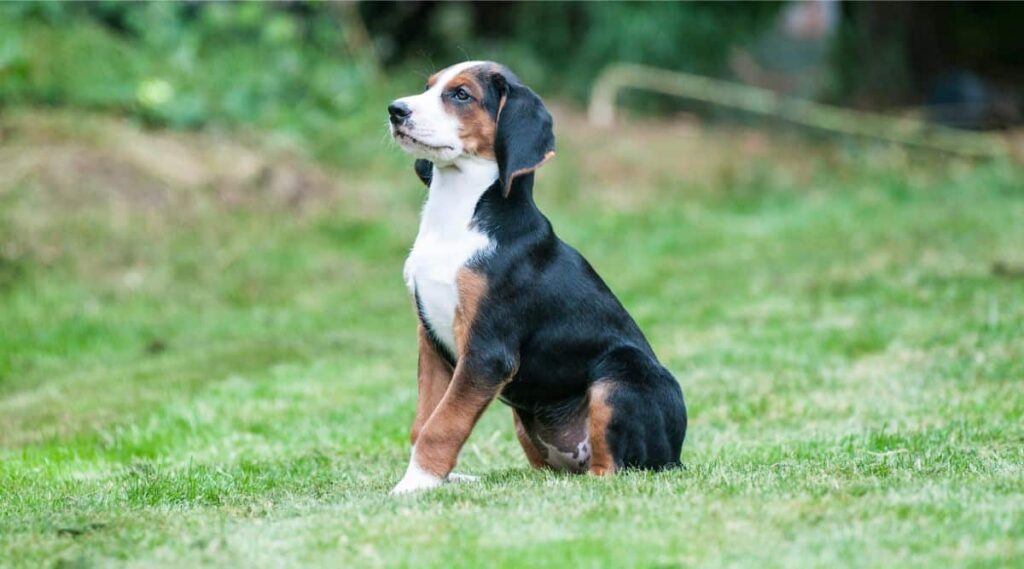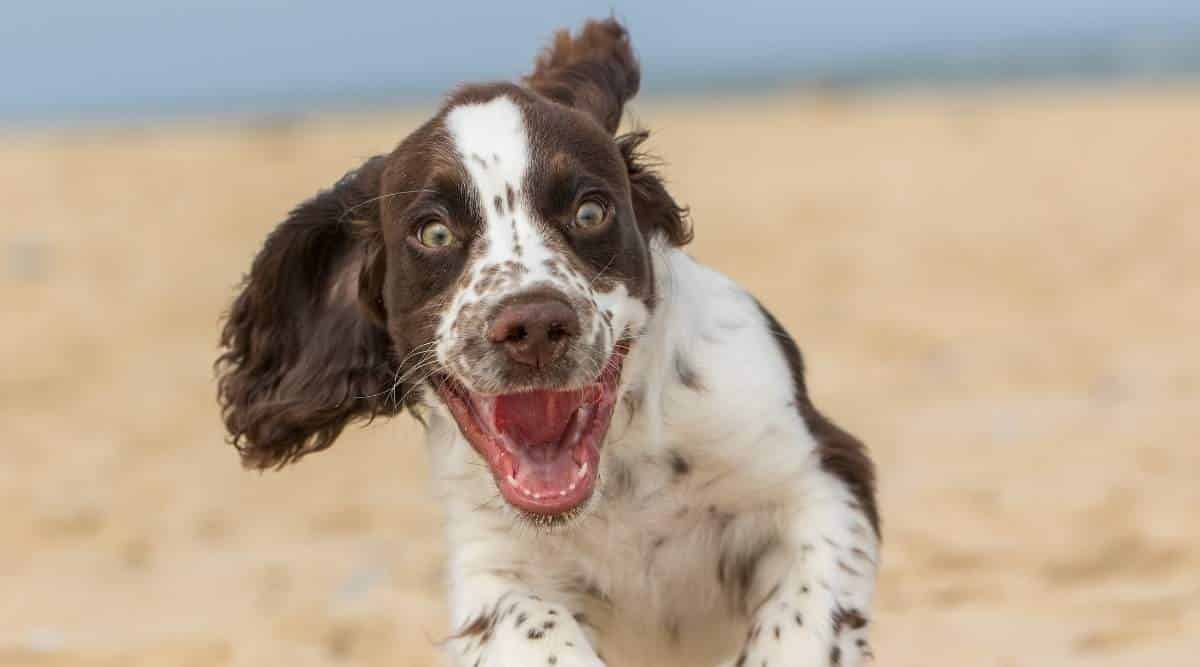Hamiltonstovare: Breed Characteristics, Temperament & More
When you purchase through links on our site, we may earn a commission. Here’s how it works.
Originating in Sweden and bred to hunt hare and fox, Hamiltonstovare resembles traditional English and American Foxhounds. A multi-purpose dog, Hamiltonstovare have been employed as service dogs in The United States since the 1990s.
Table of Contents
The Hamiltonstovare is a tough breed to find in the United States. As of early 2023, only one breeder exists in the U.S. Some individuals are imported from Sweden, Norway, and the United Kingdom, but low numbers are available across the country.
Although Hamiltons were originally hunting dogs, they make great lure-coursing dogs. They track by sight as well as scent. Their natural athleticism makes them strong agility competitors, although their stubborn streak may make training them a bit more challenging than more common breeds.
Breed History

The Hamiltonstovare originated in Sweden from hunting stock collected and bred by Count Adolf Patrick Hamilton, founder of the Swedish Kennel Club. Because the terrain in Sweden is mountainous and covered with forest, the Count sought a hunting dog with sufficient strength and agility to hunt hare and fox over this challenging ground. He blended English Foxhounds with Harriers and three no longer extant German breeds, the Curlandish Hound, the Holsteiner Hounds, and the Heiderbracke.
The breed, still popular in Sweden today, was renamed in honor of its founder, Count Hamilton. While the Hamiltonstovare is making its mark in countries outside Sweden, it is still relatively rare in the United States.
Temperament
Because he was bred to hunt singly or with just one other dog, the Hamiltonstovare is naturally brave and independent. Unlike most scent hounds, however, the Hamilton also will give chase by sight. Once his instinct takes hold and he tracks prey, the Hamilton may not respond to commands. Instinct combined with typical hound stubbornness puts him at risk if allowed to run loose in an unfenced area. He benefits from leashed walks and well-fenced yards to keep him from running off in hot pursuit.
Although the Hamitonstovare requires more exercise than most similarly sized dogs to stay mentally satisfied, he’s pretty relaxed once indoors with his family. Good-natured with children, the Hamiltonstovare is happy to take several daily walks with his people and enjoys a good run in a fenced area whenever possible. He is attuned to small game and the tendency to run deer bred out of him, but he will give chase to common neighborhood animals like rabbits and squirrels.
Size & Appearance

The Hamiltonstovare is a dog of substantial size, standing between nineteen and twenty-four inches at the shoulder, with a difference between the heights of the smaller female and larger male. Weight also varies by sex, with females at forty pounds towards the lower end of the range and males up to seventy-five. Sexual dimorphism is a breed requirement or showing a noticeable physical difference between males and females.
His moderately broad and slightly arched cranial region tops a strong jaw and long, strong, evenly broad muzzle, in which strong teeth form a scissor bite. Dark brown almond-shaped eyes express his calm disposition, and his ears hang flat against a long neck which in males shows a well-defined arch of the nape. His well-defined withers start a strong topline with a level back and long, broad croup to his tail. His deep chest and moderately sprung ribs front a slightly tucked underline.
Coat & Colors
In true hound fashion, the Hamiltonstovare’s tricolor coat reflects the Foxhound in his heritage. With tan ears, legs, and markings along his neck, shoulders, body, and under the belly and tail, his hue ranges from golden tan to a rich, rusty reddish brown. Black covers him like a mantle from the upper side of his neck to his tail. White may appear on his head as a blaze and decorate his throat, the upper side of his neck, his brisket, the tip of his tail, and lower legs or feet.
Living Conditions
While the Hamiltonstovare is a hunting dog that benefits from vigorous exercise, he also feels quite at home inside with his family. He can be pretty lazy around the house. Low maintenance and relatively quiet, the Hamiltonstovare is affectionate with his family and tolerant of younger children who are canine respectful.
Hamiltons prefer cooler climates and don’t handle extreme heat well, although most that end up in rescue in the United States are in Virginia and surrounding states. Ensure your Hamiltonstovare has access to an air-conditioned area in the summer heat, with shade and cool water when he’s outside. Provide a securely fenced yard, as he loves running and will chase based on both scent and sight. If he gets away from you, his attention will be on his quarry instead of returning to you.
Training
Hamiltonstovare are intelligent and very food driven, which is handy during his training. They respond well to positive reinforcement and are easier to train than other hounds with a stubborn streak. Their strong prey drive and hunting instinct present a challenge with recall, but in most contained and indoor situations, they’re eager to please their family.
Health
Bloat (Gastric Torsion)
Bloat, or gastric torsion, may occur in any breed but is typically seen in deep-chested dogs. The Hamiltonstovare is susceptible, and feeding only one meal daily increases the risk. While simple bloat may resolve without veterinary assistance, it can quickly become a life-threatening emergency if the stomach becomes twisted within the dog’s body and it begins to die. To reduce the risk of gastric torsion, split your dog’s ration into two or more daily feedings.
Additional ways to guard against bloat include limiting vigorous exercise immediately after eating a large meal or drinking lots of water. Feed a calcium-rich kibble with protein sources such as meat/lamb meal, fish meal, chicken by-product meal, meat meal, or bone meal near the top of the list of ingredients. These simple precautions may help him avoid this potentially fatal condition.
Ear Infections
Most ear infections are caused by an overgrowth of bacteria or yeast in the ear. The risk increases if a dog’s ears naturally fold down over the ear canal. Hamiltonstovare have ears that lie close to their cheeks, so check their ears frequently for signs of infection. If there is discharge, swelling, redness, or odor, over-the-counter ear washes and drying powders are the first line of defense. If your dog continues to shake his head or scratch his ears, consult your veterinarian.
Elbow and Hip Dysplasia
Hamiltonstovare may suffer from hip and elbow dysplasia, a painful condition found in many breeds. Breeding dogs should have an Orthopedic Foundation for Animals (OFA) or PennHIP Evaluation, and buyers should choose puppies from parents with good evaluation scores. Beyond genetic factors, nutrition plays a vital role in long-term soundness. Feeding your puppy for steady but slower growth may help avoid this painful condition. Ask your veterinarian to recommend a feeding program for your pup to maximize his chance for long-term health.
Epilepsy
Recurrent seizures characterize canine epilepsy. Hamiltons may have a genetic predisposition to epileptic seizures. So if you notice a lack of focus or muscle control or odd movements like facial twitching, paddling of a limb, or behavioral signs of fear or attention seeking, consult your veterinarian.
Although the seizure may be frightening, your veterinarian may ask for information to steer the course of treatment. Take note of the following: which body parts are affected, when the seizure occurs, how often seizures are happening, and how long the seizures last. Note how the dog acts immediately after the seizure, as the rapidity of his recovery will help determine his treatment.
Nutrition
The average adult Hamiltonstovare will eat approximately three cups of food per day. How much you’ll need to feed your dog to keep him fit will depend on weight, age, and activity level. Although the Hamilton’s energy and activity level will be high if he’s used for hunting, feeding him for slow, steady growth in his first year is significant as he is prone to joint dysplasia.
Choose a formula that meets the Association of American Feed Control Officials (AAFCO) standards and matches your pup’s age to keep this active breed healthy and reduce the health risks associated with dysplasia. A high-quality kibble including meat protein, fiber, healthy carbs, omega-3 fatty acids, vitamins, and minerals will meet your Hamiltonstovare’s nutritional needs. You’ll be less likely to need additional costly supplements.
Grooming
One of the most appealing features of the Hamiltonstovare is its easy-care coat. Hounds are notorious for their tendency to smell “doggy,” but Hamiltons have little, if any, dog smell. They hardly shed, and a bath once a month keeps them tidy. Hamiltons shed seasonally, but even in the heavy spring shedding season, they leave less hair behind than most hounds and hunting dogs.
Because Hamiltonstovare have a softer coat than some hounds, a short bristle brush that is easy to flick will gently stimulate healthy oils in the skin and effectively remove loose hairs. Work with your pup to accustom him to proper nail care, and introduce him to a soft veterinary toothbrush and pet-safe toothpaste so regular toothbrushing will be part of his normal routine.
Breeders & Puppy Costs

For a purebred Hamiltonstovare, you may expect to spend over $1,500. The biggest problem will be finding an available pup, as the breed is rare in the United States. In 2023, there is only one breeder of record in the U.S.
Rescues & Shelters
In the Southern states surrounding Virginia, the occasional Hamiltonstovare may his way into a rescue or shelter situation. The Hamiltonstovare Club of America offers help with sponsorship, fostering, advice, and registration for potential Hamiltonstovare adopters.
As Family Pets
Overall, Hamiltonstovare are:
- Excellent fox and hare hunting dogs.
- Easy-going in the home.
- Healthiest with about an hour total of daily exercise.
- Good with children.
- Low shedding.
- Easy to groom.
- Low odor.
- Difficult to find in the United States, but growing in popularity.
Final Thoughts
Although finding a Hamiltonstovare may be difficult, if you’re looking for a companion who is as happy on a twice-a-day endurance run as enjoying a quiet evening on the couch with the family, he may be the one for you. With his distinctive tricolor easy-care coat, this low shedding, low odor breed is a comfortable fit for the active family with a well-fenced yard. A formidable hunter of hare and fox, this rare breed is the perfect country companion and equally suited to the active, outdoorsy suburban lifestyle.



